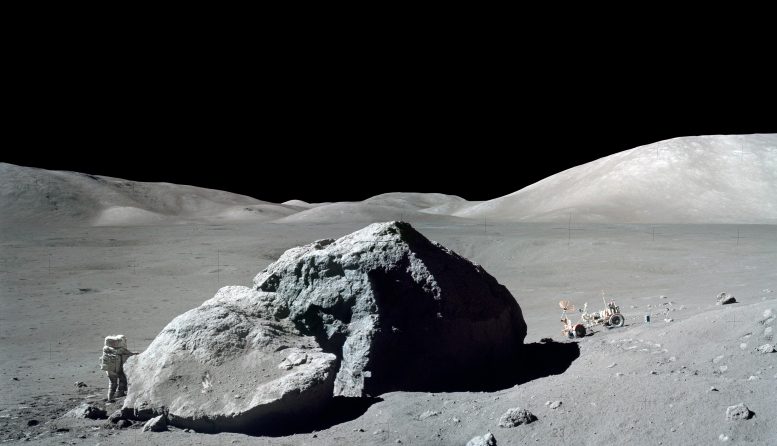
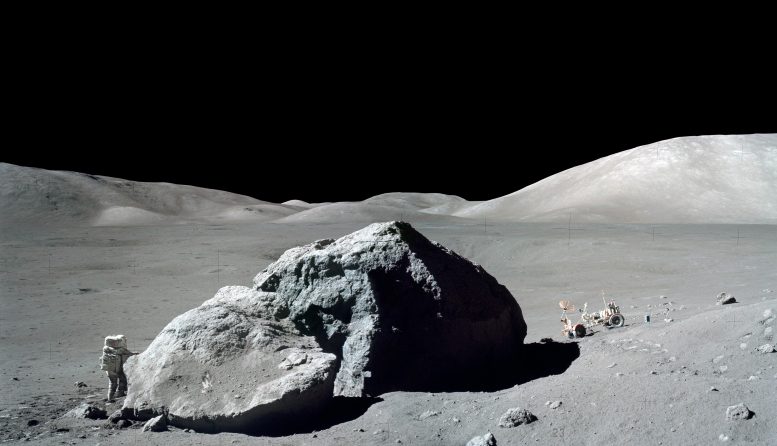
Image shows astronaut-geologist Harrison H. Schmitt standing next to a huge lunar boulder during NASA’s Apollo 17 mission in 1972. The scientists in this research used rock samples from this Apollo mission. Credit: NASA/Gene Cernan
New research has uncovered the process behind the formation of unique magmatic rocks on the Moon, shedding light on their distinct composition and how they came to be on the lunar surface.
New research has cracked a vital process in the creation of a unique rock type from the Moon. The discovery explains its signature composition and very presence on the lunar surface at all, unraveling a mystery that has long eluded scientists.
The study, published on January 15 in Nature Geoscience, reveals a key step in the genesis of these distinctive magmas. A combination of high temperature laboratory experiments using molten rocks, together with sophisticated isotopic analyses of lunar samples, identify a critical reaction that controls their composition.
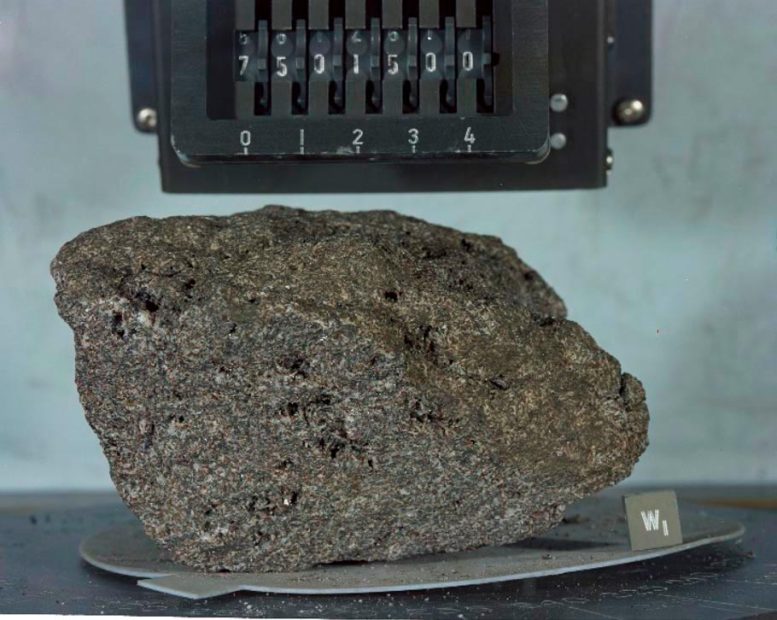
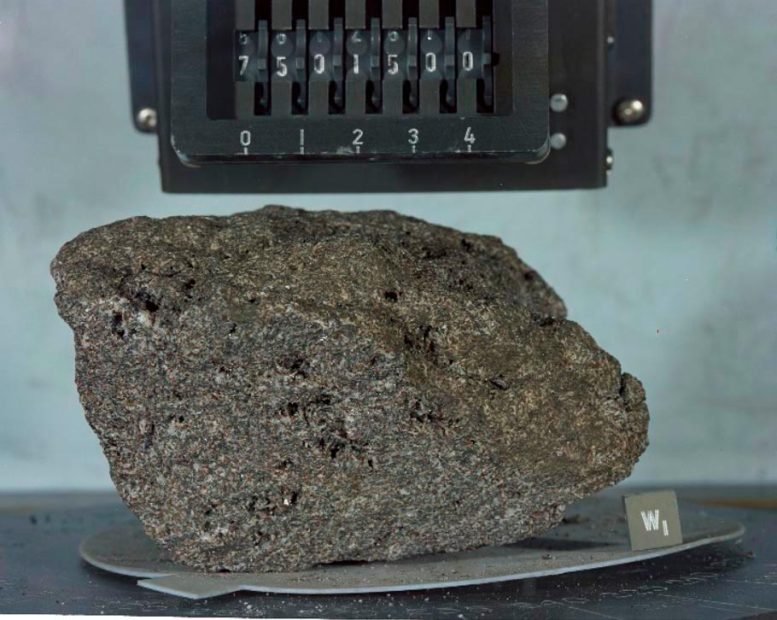
Image shows Moon rock, known as high-Ti basalt, sample from Apollo 17 mission like those analyzed in this study. Credit: NASA
The Core Reaction
This reaction took place in the deep lunar interior some three and a half billion years ago, involving exchange of the element iron (Fe) in the magma with the element magnesium (Mg) in the surrounding rocks, modifying the chemical and physical properties of the melt.
Co-lead author Tim Elliott, Professor of Earth Sciences at the University of Bristol, said: “The origin of volcanic lunar rocks is a fascinating tale involving an ‘avalanche’ of an unstable, planetary-scale crystal pile created by the cooling of a primordial magma ocean.
“Central to constraining this epic history is the presence of a magma type unique to the Moon, but explaining how such magmas could even have got to the surface, to be sampled by Space missions, has been a troublesome problem. It is great to have resolved this dilemma.”
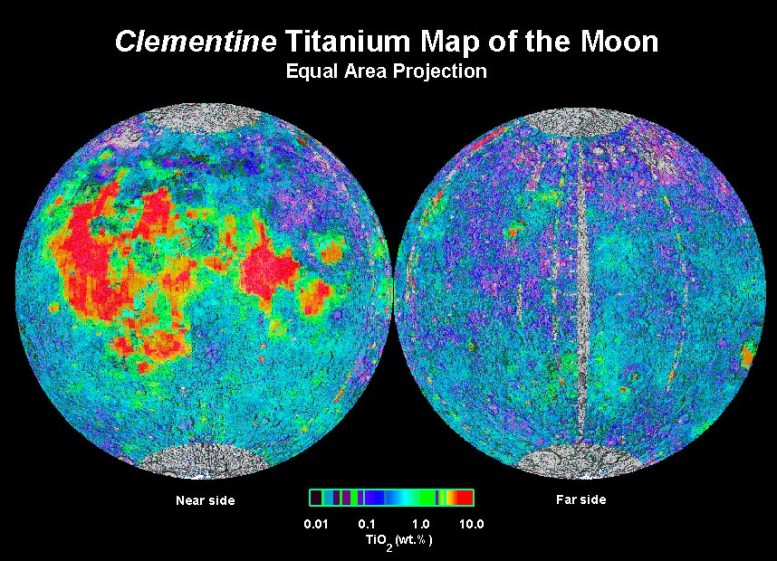
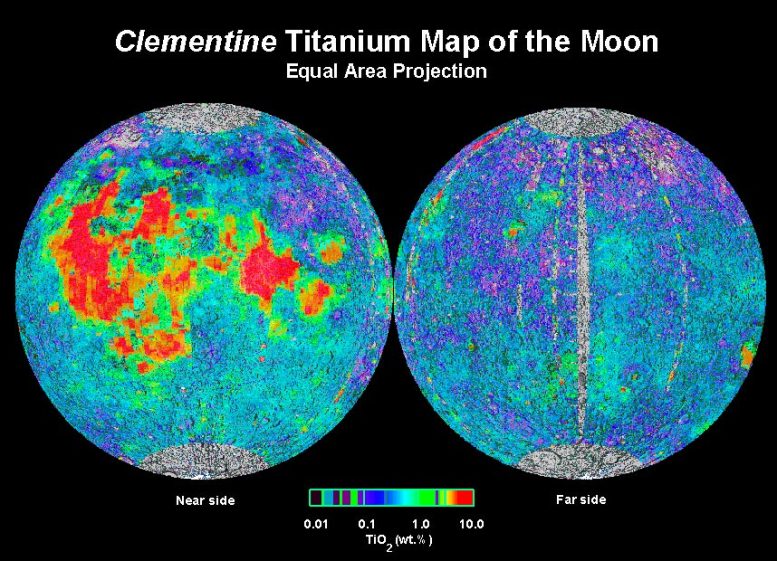
Image shows a map of the Titanium abundances of the Moon’s surface, obtained from NASA’s Clementine spacecraft. The red parts indicate extremely high concentrations compared to terrestrial rocks. Credit: Lunar and Planetary Institute
Understanding High-Ti Basalts
Surprisingly high concentrations of the element titanium (Ti) in parts of the lunar surface have been known since the NASA Apollo missions, back in the 1960s and 1970s, which successfully returned solidified, ancient lava samples from the Moon’s crust. More recent mapping by orbiting satellite shows these magmas, known as ‘high-Ti basalts’, to be widespread on the Moon.
“Until now models have been unable to recreate magma compositions that match essential chemical and physical characteristics of the high-Ti basalts. It has proven particularly hard to explain their low density, which allowed them to be erupted some three and a half billion years ago,” added co-lead author Dr. Martijn Klaver, Research Fellow at the University of Münster Institute of Mineralogy.
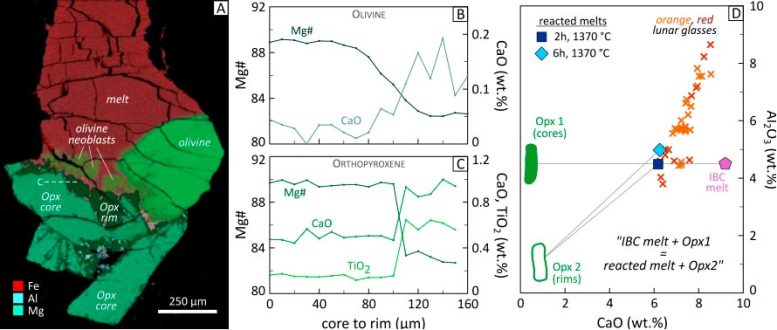
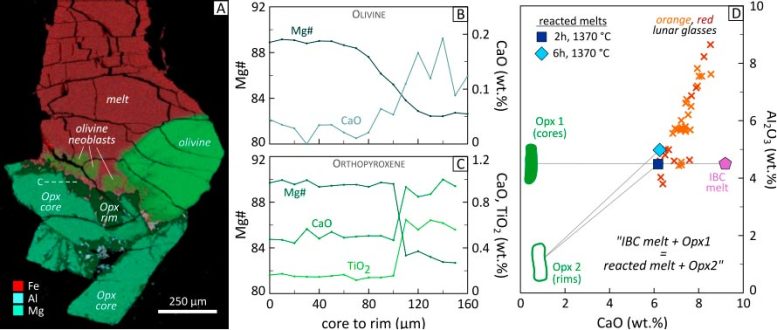
An electron-microscope image of an experiment from this study. Melt (brown color) reacts with surrounding crystals (green colors), resulting in a less Fe-rich melt. Credit: University of Bristol/University of Münster
The international team of scientists, led by the Universities of Bristol in the UK and Münster in Germany managed to mimic the high-Ti basalts in the process in the lab using high-temperature experiments. Measurements of the high-Ti basalts also revealed a distinctive isotopic composition that provides a fingerprint of the reactions reproduced by the experiments.
Both results clearly demonstrate how the melt-solid reaction is integral in understanding the formation of these unique magmas.
Reference: “Titanium-rich basaltic melts on the Moon modulated by reactive flow processes” by Martijn Klaver, Stephan Klemme, Xiao-Ning Liu, Remco C. Hin, Christopher D. Coath, Mahesh Anand, C. Johan Lissenberg, Jasper Berndt and Tim Elliott, 15 January 2024, Nature Geoscience.
DOI: 10.1038/s41561-023-01362-5
